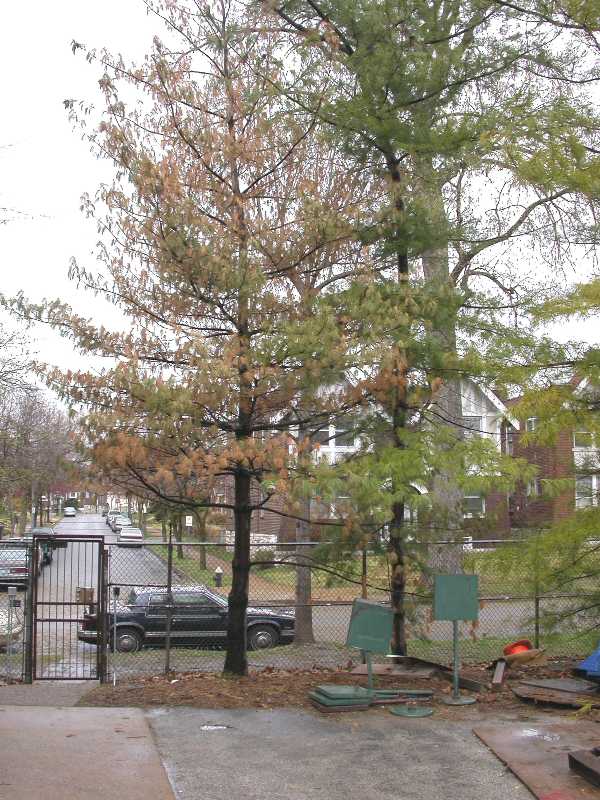 |
Yellowing white pine (Pinus strobus), a sign of white pine decline |
The eastern white pine, Pinus strobus, is a fast growing, easily transplanted tree. It can become quite large, requiring sufficient room to develop properly. White pine needles are bluish-green to medium-green with five per bundle, about 4 inches long, very thin, and not stiff. Used as a windbreak, the limbs are brittle and may suffer wind damage which can help lead to decline of the tree. In general, symptoms of decline include some pattern of needle yellowing or browning, shriveled bark on trunk and branches, oozing sap, and in some cases, death of the tree. Affected trees can range from 2 feet to 20 feet or more. The main factor is root decline.
Symptoms and Diagnosis
Inspect the roots for brown discoloration and the outer layer pulling off or not present. If the roots are white and healthy, then there are other problems. Other symptoms will be yellowing or browning of the needles and a limp appearance. Do not, however, confuse this with the normal yellowing and shedding of just older needles that occurs annually in the fall. The bark of the trunk and branches may shrivel and ooze sap. White pines suffer under conditions of urban stress, resulting in decreased vigor, less branching, shorter needles, and noticeable foliage chlorosis.
Life Cycle
There is no life cycle as the problem is environmental. There can be many contributing factors, one of which is air pollutants. Other factors can be soil pH, water-logged soil, drought, flooding, heat, and sudden extremes in temperature and moisture. Heat is a main consideration. Even though white pine grows from USDA Zone 3 to 8, it does not appear to thrive in the hot humid areas. Possible use as an understory tree in these areas may help it survive.
A white pine in poor health can be attacked by two root pathogens which can speed the decline of the tree; however, they are not the cause of decline. These pathogens are Phytophthora and Verticicladiella. Fungicides are not recommended as the fungi are not the cause of the tree decline.
Integrated Pest Management Strategies
1. Maintain plant vigor. When planting the tree, insure that the soil is moist, rich, well-drained, and on the acid side. The white pine can tolerate full sun though it will perform better in partial shade. Avoid hot, west-facing sites.
2. Select the planting area carefully. Do not use white pines as a windbreak. Since the branches are brittle, they can be damaged, causing stress in the tree. The brittleness can also lead to damage from snow and ice. Do not plant along roadways as salt spray is injurious to the tree. The tree is also subjected to ozone stress which causes needle tips to brown.
3. Planting time. White pines are best planted in spring. If fall planting is done, care should be taken to amend the soil, fertilize, water thoroughly, mulch adequately, and consider application of an anti-desiccant during early winter. Avoid using winter salt on roadways and paths especially where traffic is high.
4. On-going care. Make sure the soil is adequately drained and that the tree is watered in periods of drought. Fertilize with an acid-type fertilizer like ammonium sulfate.
5. Removal. Prompt removal of white pines suffering from decline is not required as they will not infect surrounding pines.
Organic Strategies
Strategies 1, 2, 3 and 5 are strictly organic approaches. Using an appropriate organic fertilizer would be a viable organic approach to Strategy 4.
More images:
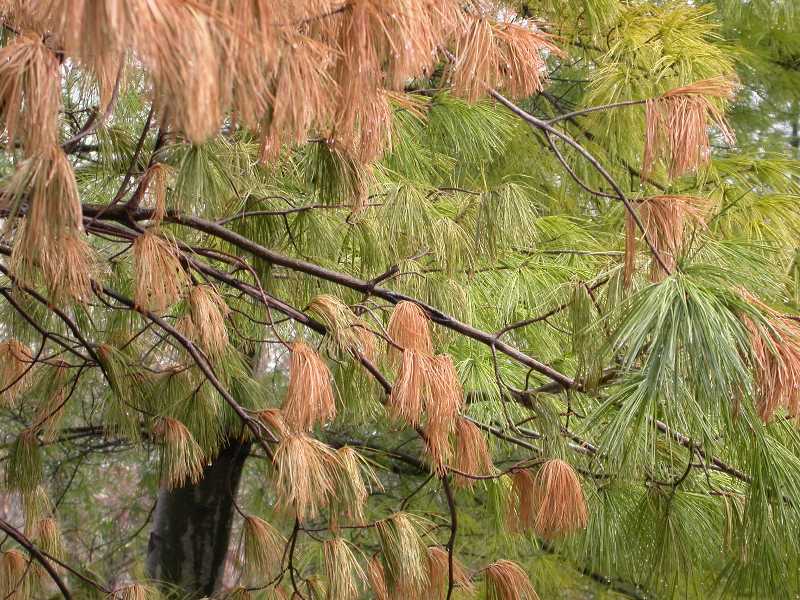 |
| Off-color needles and dying branches of white pine (Pinus strobus), a sign of white pine decline |
|
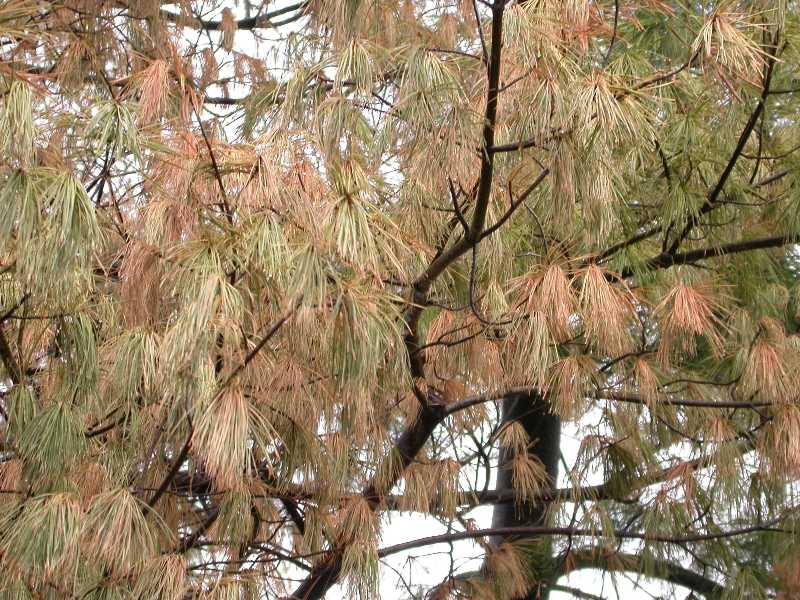 |
| Off-color needles and dying branches of white pine (Pinus strobus), a sign of white pine decline |
|
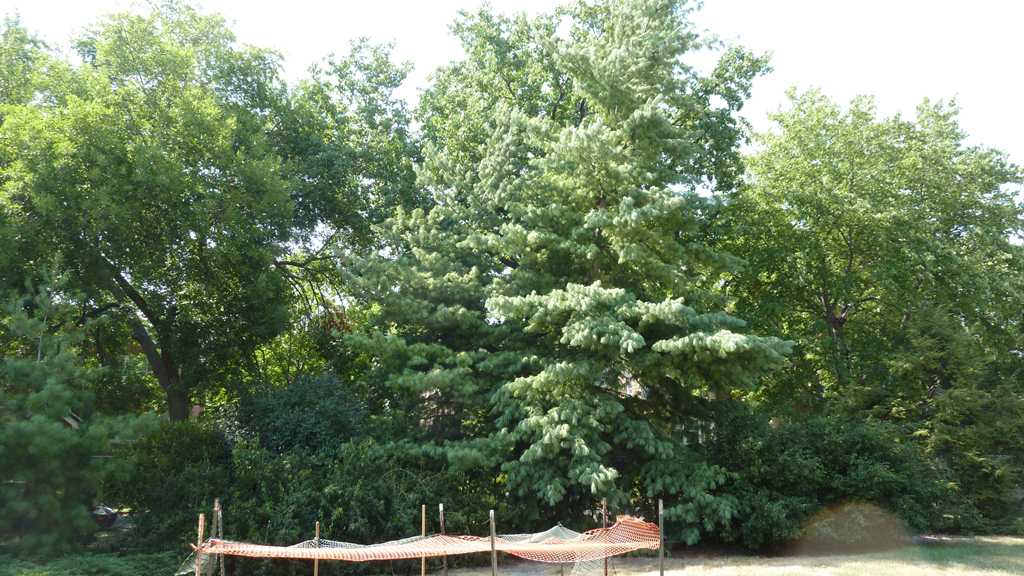 |
White pine (Pinus) with off color needles throughout the tree typical of white pine decline
|
|
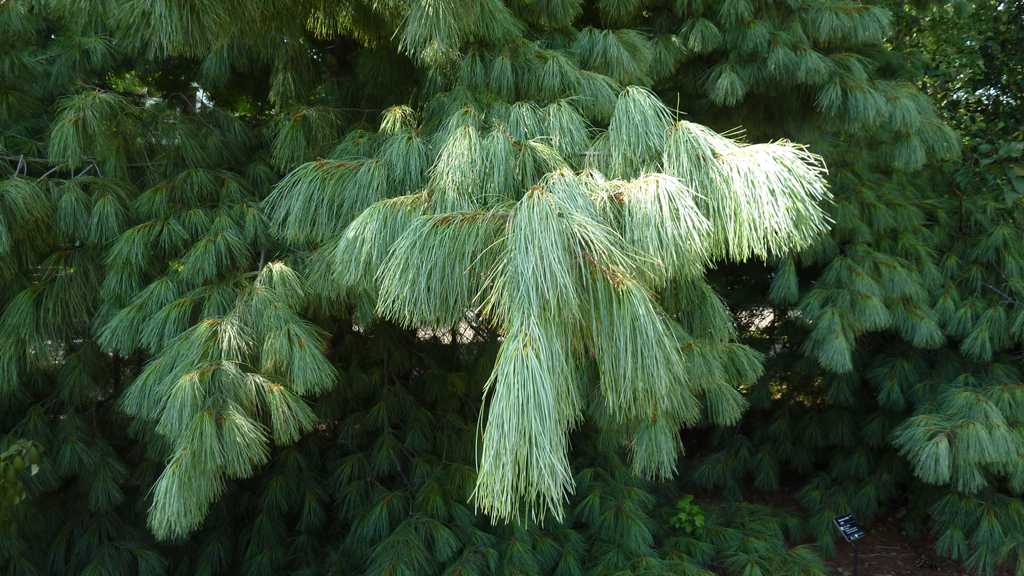 |
Wilted, off color needles on a white pine (Pinus) characteristic of white pine decline
|
|
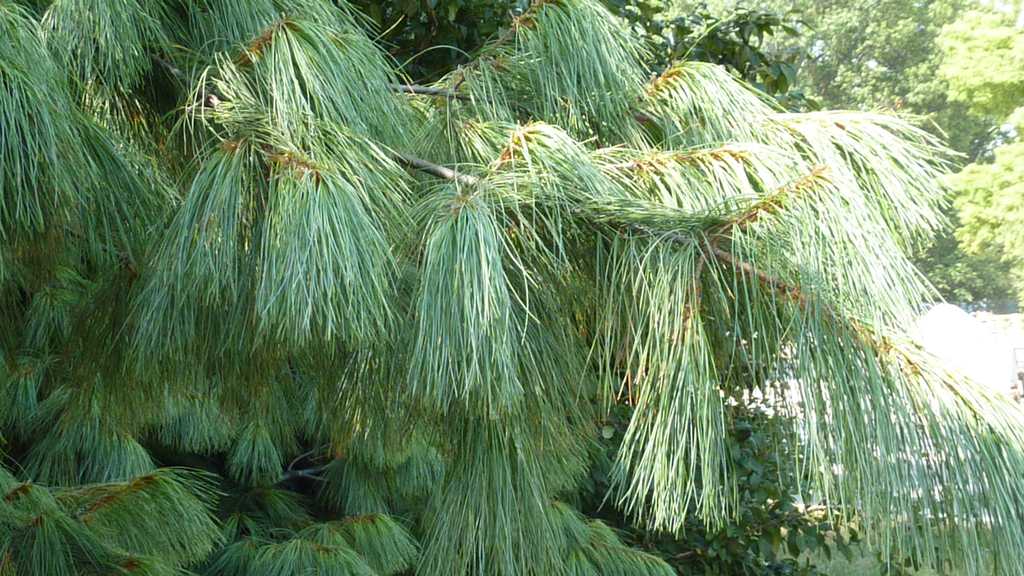 |
| Drooping, off color needles on a white pine (Pinus) characteristic of white pine decline |
|
|